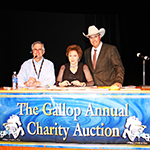Have you ever wondered why a judge didn’t place you well when you thought you had a good pattern or ride? Well, it could have been due to a “pet peeve” or an instance where a judge placed a priority on a particular maneuver or type of horse they prefer over others. Some judges may give some leeway to exhibitors who don’t set their horses up perfectly square in the showmanship while others hurt competitors more severely if they aren’t set up in a timely manner. It is all about judges mixing together their personal preferences while also closely following the rules of the class.
Despite having a new scoring system for pattern classes, including showmanship, equitation, and horsemanship, these classes still tend to be subjective events where the personal opinion of the judge is weighted heavily resulting in the placings varying more than in other classes.
GoHorseShow asked several judges about their pet peeves and what they would like to see differently in the show arena.
 Debbie Cuvelier–One of my biggest pet peeves happens in the pattern classes when an exhibitor turns their head to look and nod to the judge when their pattern is not even complete. We are scoring to the end and this disruption in the pattern is a definite drop in their score. Another pet peeve of mine is this–not every horse needs to be an all-around horse. When people take a nice western horse and insist on trying to do the hunter under saddle and equitation poorly, it leaves a bad impression on the judge. Just concentrate on making your good events great! This will leave you and your horse happier.
Debbie Cuvelier–One of my biggest pet peeves happens in the pattern classes when an exhibitor turns their head to look and nod to the judge when their pattern is not even complete. We are scoring to the end and this disruption in the pattern is a definite drop in their score. Another pet peeve of mine is this–not every horse needs to be an all-around horse. When people take a nice western horse and insist on trying to do the hunter under saddle and equitation poorly, it leaves a bad impression on the judge. Just concentrate on making your good events great! This will leave you and your horse happier.
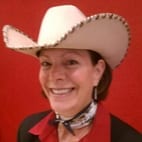 Lisa Krohn–I have two pet peeves when judging. The first, and I’m not sure this qualifies as a pet peeve since it’s a major fault in my mind, is when western pleasure exhibitors ride their horses at such a ridiculously slow pace that I can’t see what their horse can do or give them any credit. When it takes a full minute to get down one side of the ring, you’re going too slow and should not be rewarded. That’s not the intent of our western pleasure classes or what the western horse was designed to do, and just because it might take talent to train your horse to do that type of gait, I’m not going to reward you for it. Riders need to ride their horses at the pace that’s comfortable for the horse, and is flowing and smooth, even though it may take you off the rail. I for one, will never hurt an exhibitor for coming off the rail if the horse is moving correctly, steady and in control on a soft or loose rein. Secondly, in pattern classes, it bothers me when some riders fail to ride the pattern as it was written. I know that sometimes it’s a mistake or riders forget something, but it happens so often I think that a lot of times, it’s a failure to follow directions. If it says to extend the jog, or canter one small and one large circle, the lengthening and size of the circles need to be obvious to the judge, in order to give credit.
Lisa Krohn–I have two pet peeves when judging. The first, and I’m not sure this qualifies as a pet peeve since it’s a major fault in my mind, is when western pleasure exhibitors ride their horses at such a ridiculously slow pace that I can’t see what their horse can do or give them any credit. When it takes a full minute to get down one side of the ring, you’re going too slow and should not be rewarded. That’s not the intent of our western pleasure classes or what the western horse was designed to do, and just because it might take talent to train your horse to do that type of gait, I’m not going to reward you for it. Riders need to ride their horses at the pace that’s comfortable for the horse, and is flowing and smooth, even though it may take you off the rail. I for one, will never hurt an exhibitor for coming off the rail if the horse is moving correctly, steady and in control on a soft or loose rein. Secondly, in pattern classes, it bothers me when some riders fail to ride the pattern as it was written. I know that sometimes it’s a mistake or riders forget something, but it happens so often I think that a lot of times, it’s a failure to follow directions. If it says to extend the jog, or canter one small and one large circle, the lengthening and size of the circles need to be obvious to the judge, in order to give credit.
 Nancy Swarm–Over
Nancy Swarm–Over
the many years of my career of judging, I have developed many
pet peeves! A few that stand out in my mind are ill-fitting clothing.
Your show outfit does not have to be the most intricate or expensive,
but should fit properly and be clean. Pants should be long enough,
covering the heel of the boot. Hats should be blocked properly per the
current style and hair should be neatly contained. Another issue that I
have is with equipment. Halters and bridles must be properly adjusted
for each individual horse. Horses that are not carrying adequate weight,
are thin, have bad hair coats with lack of bloom are a big negative in
my book. Numbers should always be put on straight and be totally
visible. In the short time that we have, it is a hard enough job to
judge and struggling to get a number is frustrating. Also, I have a
strong dislike for plastic covers on numbers, as they create a glare.
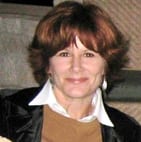 Michele Pearson–My current dislikes as far as fashion are white hats (fashionable for a short time, but not now) and tight, stretchy shirts for inappropriate body types, as well as excessive bling. Thin horses offend me in the overall turnout presentation, starving our horses to go slower went out in the 80’s! Finally, as far as performance, a horse must walk, jog and lope to achieve the gait requirements. This does not mean a running walk or shuffle for a jog or a four beat lope. If a horse doesn’t walk, jog and lope correctly, even if it means moving forward a bit, it didn’t meet the class requirements for me, even in a pattern class.
Michele Pearson–My current dislikes as far as fashion are white hats (fashionable for a short time, but not now) and tight, stretchy shirts for inappropriate body types, as well as excessive bling. Thin horses offend me in the overall turnout presentation, starving our horses to go slower went out in the 80’s! Finally, as far as performance, a horse must walk, jog and lope to achieve the gait requirements. This does not mean a running walk or shuffle for a jog or a four beat lope. If a horse doesn’t walk, jog and lope correctly, even if it means moving forward a bit, it didn’t meet the class requirements for me, even in a pattern class.
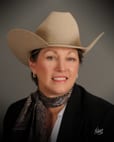 Lynda Danielson–I have noticed in the hunter under saddle classes that a lot of girls wear large gaudy earrings. A small diamond type stud earring is acceptable. The large blingy ones are not. Hunter Under Saddle classes and hunt seat equitation are very conservative classes as far as the dress code is concerned. Understated elegance should be the guideline that is followed. Our rule books clearly state the proper attire to be worn in these classes.
Lynda Danielson–I have noticed in the hunter under saddle classes that a lot of girls wear large gaudy earrings. A small diamond type stud earring is acceptable. The large blingy ones are not. Hunter Under Saddle classes and hunt seat equitation are very conservative classes as far as the dress code is concerned. Understated elegance should be the guideline that is followed. Our rule books clearly state the proper attire to be worn in these classes.
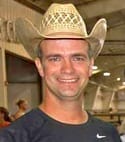 Brad Jewett–There’s correct and incorrect. For me it’s tot so much about pet peeves. That’s how I judge. There’s a lot of different styles out there, and you can’t get caught up in your own pet peeves. If there’s one thing that bothers me most is those who do not take the time to learn a pattern. No matter the level of horse or rider we can all learn a pattern.
Brad Jewett–There’s correct and incorrect. For me it’s tot so much about pet peeves. That’s how I judge. There’s a lot of different styles out there, and you can’t get caught up in your own pet peeves. If there’s one thing that bothers me most is those who do not take the time to learn a pattern. No matter the level of horse or rider we can all learn a pattern.
 Jennifer Lynn Thompson–Well, le’ts start by saying we all have pet peeves, but not many make us crazy. I think all of us, as judges, expect to see mistakes–especially in the novice classes. I wouldn’t want to discourage anyone to think the second we they walk in the arena, we’re looking for the negative. However with that said, some little things that immediately catch my eye that I don’t care for are different for different classes. An immediate “red flag” for me is in the showmanship, pants that are too short, and a poorly shaped hat instantly put a negative thought in my head. First impressions, especially in that class, are so important. It’s such a simple thing to do, and it doesn’t cost a lot of money. I think your overall appearance in all classes is important. Some people come into a class and appear to not want to be there. At least put on your “happy face” for your 10 minutes while you’re showing. It costs a lot of money to be there. Just remember, it needs to stay fun.
Jennifer Lynn Thompson–Well, le’ts start by saying we all have pet peeves, but not many make us crazy. I think all of us, as judges, expect to see mistakes–especially in the novice classes. I wouldn’t want to discourage anyone to think the second we they walk in the arena, we’re looking for the negative. However with that said, some little things that immediately catch my eye that I don’t care for are different for different classes. An immediate “red flag” for me is in the showmanship, pants that are too short, and a poorly shaped hat instantly put a negative thought in my head. First impressions, especially in that class, are so important. It’s such a simple thing to do, and it doesn’t cost a lot of money. I think your overall appearance in all classes is important. Some people come into a class and appear to not want to be there. At least put on your “happy face” for your 10 minutes while you’re showing. It costs a lot of money to be there. Just remember, it needs to stay fun.
 Sid Griffith–One pet peeve I have often has nothing to do with the exhibitors, but in riding classes, it is the size of the number on the pads. As a judge with sun, glare, dust and big classes, the bigger numbers are so much easier to read accurately and find your placings. Probably my biggest overall pet peeve is when riders fail to execute timely transitions when called for. There is no reason to rush a transition, but it shouldn’t take a full length of the arena to follow instructions. Additionally, rider and horses who fail to work respectfully on the rail – meaning don’t pile up and run the judge or other exhibitors over. It is amazing how much smoother a class will run, when riders will stay out to the rail unless passing courteously or using good horse sense about achieving better rail position in a big herd. In pattern classes, rider courtesy to be up to the line in a timely fashion for your individual go is a huge pet peeve of mine. It shows respects for the other exhibitors, the steward, and show committees. In hunt seat classes which are very tradition based, it is always a pleasure to see riders who take the time to honor proper turnout, meaning neatly contained hair, (big nets and bows are not traditional) and properly fitted clothing and clean tack. Although it certainly doesn’t speak to how well the rider performs, it does show that the rider went the extra mile to look their best no matter what the budget.
Sid Griffith–One pet peeve I have often has nothing to do with the exhibitors, but in riding classes, it is the size of the number on the pads. As a judge with sun, glare, dust and big classes, the bigger numbers are so much easier to read accurately and find your placings. Probably my biggest overall pet peeve is when riders fail to execute timely transitions when called for. There is no reason to rush a transition, but it shouldn’t take a full length of the arena to follow instructions. Additionally, rider and horses who fail to work respectfully on the rail – meaning don’t pile up and run the judge or other exhibitors over. It is amazing how much smoother a class will run, when riders will stay out to the rail unless passing courteously or using good horse sense about achieving better rail position in a big herd. In pattern classes, rider courtesy to be up to the line in a timely fashion for your individual go is a huge pet peeve of mine. It shows respects for the other exhibitors, the steward, and show committees. In hunt seat classes which are very tradition based, it is always a pleasure to see riders who take the time to honor proper turnout, meaning neatly contained hair, (big nets and bows are not traditional) and properly fitted clothing and clean tack. Although it certainly doesn’t speak to how well the rider performs, it does show that the rider went the extra mile to look their best no matter what the budget.
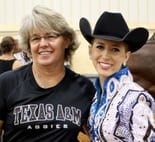 Michelle Tidwell–When exhibitors walk into the arena, they are showing and should not be picking at their horses. I see exhibitors at the cone adjusting their hand and continually picking at their horse–that even goes for when you walk in the arena to line up waiting on your turn to show. It is distracting and not courteous to other exhibitors that are working their pattern.
Michelle Tidwell–When exhibitors walk into the arena, they are showing and should not be picking at their horses. I see exhibitors at the cone adjusting their hand and continually picking at their horse–that even goes for when you walk in the arena to line up waiting on your turn to show. It is distracting and not courteous to other exhibitors that are working their pattern.
 Ruth Ellen–My biggest pet peeve is an exhibitor that stares at me while they are showing. I like eye contact during showmanship, but prefer riders to look ahead and not at me. My second pet peeve is the rider that “waits” at the end of his/her horsemanship or equitation pattern and then looks at me and nods before exiting.
Ruth Ellen–My biggest pet peeve is an exhibitor that stares at me while they are showing. I like eye contact during showmanship, but prefer riders to look ahead and not at me. My second pet peeve is the rider that “waits” at the end of his/her horsemanship or equitation pattern and then looks at me and nods before exiting.
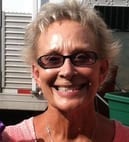 Charlene Carter–Exhibitors not ready when it’s their turn to go; exhibitors that have a clear distance in front of them, but will not go; poorly shaped hats or nicely shaped hats that are set too low on an exhibitors face. Of course, unkept nails! Also, exhibitors riding on top of me in the hunter under classes, we can’t watch their horses legs when they are too close.
Charlene Carter–Exhibitors not ready when it’s their turn to go; exhibitors that have a clear distance in front of them, but will not go; poorly shaped hats or nicely shaped hats that are set too low on an exhibitors face. Of course, unkept nails! Also, exhibitors riding on top of me in the hunter under classes, we can’t watch their horses legs when they are too close.
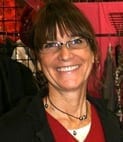 Stephanie Lynn– A poorly shaped hat, unkempt hair, inappropriate dress (too revealing, poor fit, outlandish), excessive schooling, being late or making the judges wait, and unsportsmanlike conduct – bad attitude! I guess that is still number one for me. I can forgive a lot of learning of what is right and what is wrong, but not bad behavior!
Stephanie Lynn– A poorly shaped hat, unkempt hair, inappropriate dress (too revealing, poor fit, outlandish), excessive schooling, being late or making the judges wait, and unsportsmanlike conduct – bad attitude! I guess that is still number one for me. I can forgive a lot of learning of what is right and what is wrong, but not bad behavior!
 Daren Wright–Exhibitors who are not ready at the gate or cone and exhibitors who do not or are not willing to follow direction. For example, when the gate person calls the class to the gate, we would appreciate the exhibitors to actually head toward the gate. It may not seem like a big deal to wait an extra two or three minutes on an exhibitor, but when that happens with multiple exhibitors and multiple classes it can add a lot of time to the show.
Daren Wright–Exhibitors who are not ready at the gate or cone and exhibitors who do not or are not willing to follow direction. For example, when the gate person calls the class to the gate, we would appreciate the exhibitors to actually head toward the gate. It may not seem like a big deal to wait an extra two or three minutes on an exhibitor, but when that happens with multiple exhibitors and multiple classes it can add a lot of time to the show.
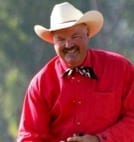 Michael Damianos–I think my biggest pet peeve is exhibitors in pattern classes that are tardy. On all my patterns it always states, “Be waiting at marker ‘A’ for judge’s signal to start”. Failure to be ready is such a flaw in making a good impression.
Michael Damianos–I think my biggest pet peeve is exhibitors in pattern classes that are tardy. On all my patterns it always states, “Be waiting at marker ‘A’ for judge’s signal to start”. Failure to be ready is such a flaw in making a good impression.
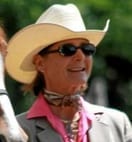 Sherrye Johnson-Trafton–What comes to mind for pet peeves – exhibitors, trainers and parents need to read the rules for the events they are competing in.
Sherrye Johnson-Trafton–What comes to mind for pet peeves – exhibitors, trainers and parents need to read the rules for the events they are competing in.
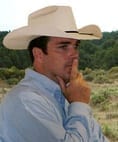 Clint Fullerton–I hesitate to call anything a pet peeve because as judges I think we need to not ever give the impression that we are perturbed by anyone that comes to support our horse shows. We as judges need to keep in mind that we are there as an employee of the show and need to do our best to represent good customer service and provide a great atmosphere and encourage people to come back.
Clint Fullerton–I hesitate to call anything a pet peeve because as judges I think we need to not ever give the impression that we are perturbed by anyone that comes to support our horse shows. We as judges need to keep in mind that we are there as an employee of the show and need to do our best to represent good customer service and provide a great atmosphere and encourage people to come back.
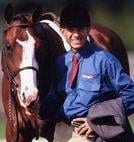 Jerry Erickson–One of my biggest pet peeves takes place before the exhibitor even enters the arena. I think there is no excuse for being late to your class and I get quite impatient waiting for an entry to get to the gate. I get especially impatient when said contestant gets to the gate then has to stop to put their chaps on or finish buttoning a hunt coat. Along this same line of thinking, I am also influenced by an exhibitor who is not turned out correctly, specifically dirty boots. I really don’t care if the horse has fresh hoof black or an excessive amount of coat shine, but I do want the exhibitor’s boots cleaned and hair in place.
Jerry Erickson–One of my biggest pet peeves takes place before the exhibitor even enters the arena. I think there is no excuse for being late to your class and I get quite impatient waiting for an entry to get to the gate. I get especially impatient when said contestant gets to the gate then has to stop to put their chaps on or finish buttoning a hunt coat. Along this same line of thinking, I am also influenced by an exhibitor who is not turned out correctly, specifically dirty boots. I really don’t care if the horse has fresh hoof black or an excessive amount of coat shine, but I do want the exhibitor’s boots cleaned and hair in place.
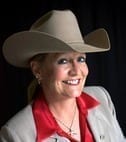 Christa Baldwin–One of my pet peeves is exhibitors not entering the pen promptly! The horse shows have gotten so long because of all the added classes, and, now with the leveling, it is really important to get in the class and be ready to start when the next class is exiting. I would rather have more time to judge than waste time between classes, etc. If the judge doesn’t keep the show moving, then the later classes get hurt by people scratching or the exhibitor being so tired they don’t do their best.
Christa Baldwin–One of my pet peeves is exhibitors not entering the pen promptly! The horse shows have gotten so long because of all the added classes, and, now with the leveling, it is really important to get in the class and be ready to start when the next class is exiting. I would rather have more time to judge than waste time between classes, etc. If the judge doesn’t keep the show moving, then the later classes get hurt by people scratching or the exhibitor being so tired they don’t do their best.




